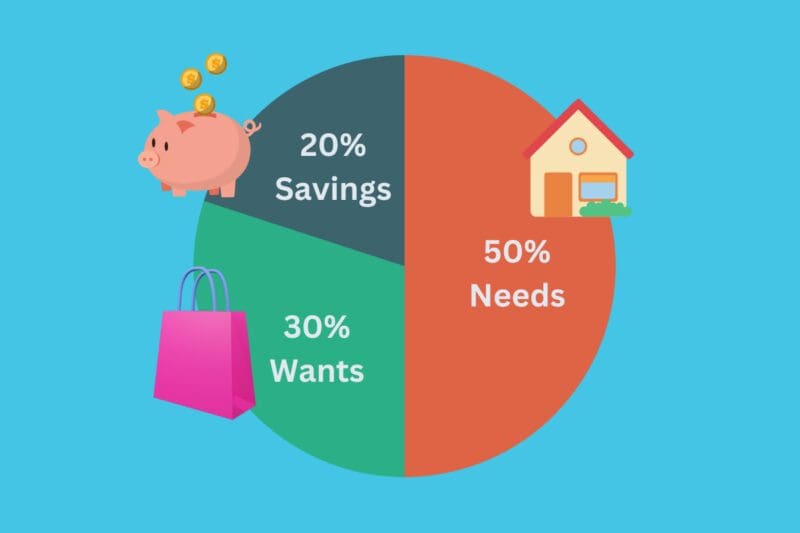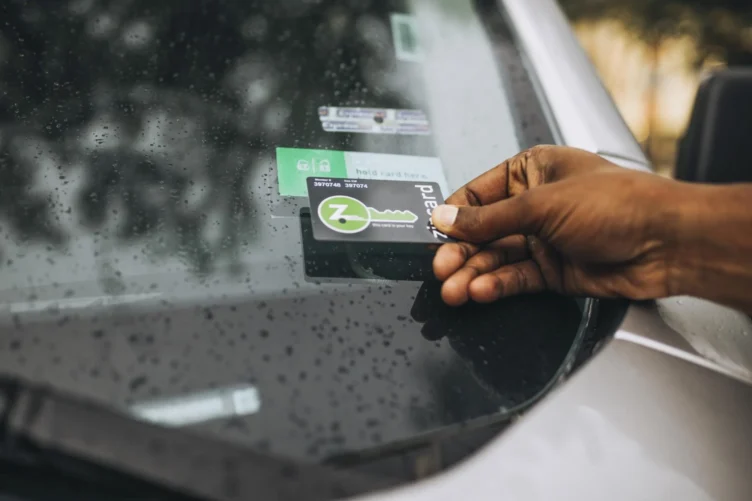Ever felt the weight of managing finances for a bustling household? With a large family comes unique challenges. Understanding the dynamics of allocating resources efficiently across multiple family members is essential for financial stability.
Growing up in a bustling household with siblings of all ages, I experienced firsthand the challenges of being part of a large family. A home full of laughter, occasional squabbles over toys, and the ever-present need to stretch every dollar are memories that have shaped my understanding of family budgeting. As I dug deeper into the topic of budgeting tips for large families, I began speaking to other parents and children from large families. I found stories that resonated with my own experiences, offering a unique perspective on tips for families managing finances.
The Dynamics of Large Families
Every large family has its rhythm, a finely tuned cadence of managing needs, wants, and priorities. I remember when my younger brother needed new shoes just as my elder sister was heading off for a college trip. Those overlapping expenses were a regular feature in our household. In discussions with other families, this theme is common. The challenge isn’t just managing these expenses but understanding the emotional and practical dynamics behind them.
In my conversations with parents from other large families, a recurring sentiment was the need for open communication. One dad explained how they held monthly family meetings to discuss their budget, allowing each family member to voice their needs and concerns. Another mom emphasized the importance of teaching children the value of money from a young age, ensuring they grow up with a sense of financial responsibility.
The strength of large families lies in their diversity. From toddlers to teenagers, each member has unique needs and desires. Balancing these while maintaining a cohesive family unit requires understanding, patience, and a well-thought-out budget.
The 50/30/20 Budget: The Cornerstone of Financial Planning

The 50/30/20 rule is a foundational principle in the budgeting process. It recommends allocating 50% of your income to essentials, 30% to discretionary expenses, and 20% to savings and debt repayment. For a large family, this breakdown of your spending habits can be understood as follows:
The easiest way to track your spending is to use the free tools that come with your credit card, or download one of the simple budgeting apps.
8 Money Saving Budgeting Tips for Large Families
TIP 1
Wholesale Grocery Shopping

Navigating the aisles of a regular supermarket can be a routine experience, but have you ever considered the potential savings at wholesale giants like Costco or Sam’s Club? Wholesale grocery shopping is one of the best budgeting tips for large families. For a family of 8, the difference can make a substantial dent in your grocery budget. According to the U.S. Bureau of Labor Statistics, a family of 8 might spend around $20,572 annually at a regular supermarket or grocery store. However, by switching to wholesale stores which are generally 20-30% cheaper, your food costs could drop to approximately $15,429. This translates to a whopping $5,143 in annual savings!
But where do these savings come from? Bulk purchasing and fewer markups play a significant role. Some of the top items where your family can save the most include:
Switching to wholesale shopping isn’t just about saving money on groceries; it’s about getting more value for every dollar spent in your food budget. Don’t forget to stick to your grocery list so you only buy things you need.So, next time you’re planning your grocery trip, consider heading to a wholesale store and making those savings count.
TIP 2
End-of-Season Sales
Who isn’t a fan of retail therapy? It’s even better when you snag a deal. Retailers like Macy’s, Nordstrom, and even Target always have end-of-season sales, offering discounts as high as 70%. For instance, those summer dresses or designer jeans that were priced at $100 might be available for just $30 as fall approaches. For a family of eight, this could mean annual savings of up to $1,500 or more, especially when shopping for seasonal essentials like winter coats or swimwear.
TIP 3
DIY: Do it Yourself

The DIY movement, fueled by platforms like Pinterest and YouTube, is more than just a trend—it’s a testament to the potential savings and personal satisfaction that come with hands-on work. Consider the financial benefits:
The Home Advisor True Cost Report estimates that, on average, a homeowner spends $9,081 annually on maintenance and upgrades. If we conservatively estimate a 75% cost reduction through DIY efforts, the savings amount to $6,810.
Diving into DIY doesn’t just save money, it adds a personal touch to your projects. Before starting, ensure you’re equipped with the right knowledge—take advantage of the free workshops and resources available.
TIP 4
Eat at Home More Often
The cost of eating out can quickly accumulate, especially for a family of 8. Dining out once a week at a mid-range restaurant can cost around $160 for the entire family. That’s a staggering $8,320 annually! Add to this the cost of take-out twice a week, and you’re looking at an annual expenditure of $16,640 just on meals outside the home.
But you can decrease these expenses and still feel the thrill of a mouth-watering meal. Home-prepared value meals like Spaghetti Bolognese, Chicken Stir-Fry, and Taco Night not only offer variety but are also easy on the wallet, costing less than $25 for a family of 8. Preparing these meals at home can bring down your annual food expenditure to approximately $3,900. Having a meal plan is the key to keeping it interesting.
Eating at home more often is high on the list of best budgeting tips for large families. By cooking at home you can save an impressive $12,740 every year. Plus, there’s the added fun of family cooking sessions, the health benefits of home-cooked meals, and the priceless memories created around the dining table. So, the next time you think of ordering in or heading out, consider your own kitchen and the dollars you’ll be saving.
TIP 5
Second-Hand Shopping
New isn’t always better. Platforms like eBay or local thrift stores can be gold mines, especially for items that kids outgrow quickly. Consider this: a brand-new bicycle might cost $250, but a gently used one? Perhaps just $100. And it’s not just about bikes. Clothes, toys, books – the savings across categories can be substantial. For a family of eight, opting for second-hand items whenever feasible could lead to annual savings of over $2,000.
TIP 6
Rethink Your Second Car

Owning a car comes with its freedom, but it also brings a slew of expenses, many of which we often overlook. From the obvious costs like fuel and maintenance to the hidden ones like depreciation, taxes, and parking fees, the financial burden can quickly add up. Did you know that the annual expense of owning a new average priced car can soar up to a staggering $17,578.80?
But there is a way to enjoy the convenience of a car without the hefty price tag. Enter car-sharing services like Zipcar or Turo. If you’re unfamiliar, Zipcar offers the luxury of driving without the costs of ownership. With a modest membership fee and hourly rates, you can have access to a car only when you need it. The best part? Fuel, insurance, and maintenance are all included. For a family considering a second car to use 2-3 times per week, the annual expenses with Zipcar can be as low as $3,910.
By utilising car-share instead of owning a second car, you could pocket a whopping $13,668.80 in savings in just the first year. That’s money you could invest, use for a family vacation, or even put towards your child’s education. If you’re serious about saving money, replacing your second car in favor of using car-share is one of the best bang-for-buck budgeting tips for large families.
TIP 7
Grow Your Own Veggies
It might sound odd, but gardening can be a gold mine when it comes to cutting down on grocery bills. According to a study by the National Gardening Association, the average family spends about $70 on their garden annually but reaps produce worth around $600. That’s a net saving of $530 every year!
The University of California Cooperative Extension found that backyard gardeners could grow produce for just $0.58 per pound, while the same items might cost around $2.00 in a store. That’s a saving of $1.42 for every pound of food!
And if you’re looking for community experiences, Mother Earth News surveyed its readers and found that gardeners saved an average of $500 per year. Some even reported much higher savings.
So, the next time you’re at the store eyeing those pricey organic tomatoes, think about the patch of green in your backyard. Every bit of money saved counts!
TIP 8
Reduce Your Subscriptions
Subscription services, from Netflix to Fitbit, have seamlessly integrated into our daily lives. Their convenience, often masked by auto-payments, can be misleading. A recent study from May 18, 2022, unveiled a startling truth: consumers believed they were spending an average of $86 per month on subscriptions, but the actual average cost was a hefty $219. This discrepancy, a difference of $133 monthly, underscores how these costs can easily go unnoticed.
Within a large family, these overlooked expenses can quickly mount up. If you were to reduce your family’s subscription costs by 50%, you could save approximately $1,596 annually ($133 x 12 months x 0.5). With 74% of consumers admitting they forget about their recurring charges and 42% paying for services they no longer use, the potential savings from a thorough subscription audit are significant.
When maximizing savings is paramount, especially for larger households, it’s crucial to periodically evaluate the true value of subscription services. By doing so, you can ensure you’re not just spending thoughtlessly but channeling your funds to where they genuinely make a difference.
Wrapping Up
Managing finances for a large family can be a challenging yet rewarding endeavor. By implementing these budgeting tips for large families, you can navigate the complexities of budgeting for your family, ensuring every dollar is put to its best use. From embracing wholesale shopping to rethinking transportation and subscription costs, there are many ways to maximize savings. By fostering open communication, teaching financial responsibility from a young age, and regularly evaluating expenses, your large family can achieve financial stability and prosperity. Remember, it’s not just about cutting costs but about making informed decisions that enhance the quality of life for everyone in your family.
Frequently Asked Questions



